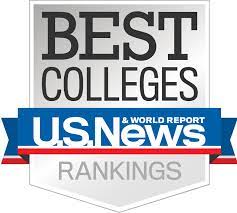“Test-Optional” means that a student is not required to submit an ACT/SAT score as part of the admission process. However, what colleges and anti-test advocates claim is not always the reality. Let’s look at those claims and see what the facts are.
Claim: Not submitting a test score to a test-optional school will not hurt students’ chances at being admitted.

Facts: The courts disagree. Due to students with disabilities not having access to ACT/SAT testing during Covid-19, a California judge mandated that UC schools go test-blind instead of test-optional because “non-submitters in the pre-Covid-19, non-UC world were disadvantaged by a test-optional admissions process.”
The reasons range from college admissions considering a non-submitted application to be a lower score (which is likely) or the colleges giving a “second look” to applications with test scores and not to test-option submissions.
Claim: Test-optional gives you a better chance at competitive schools with previously high admission standards.

Facts: Many people had this same idea. The number of applications at the more elite schools has skyrocketed in 2020-2021, decreasing the chances of getting in.
Also, the elite schools will be weighing students’ opportunities to submit a score. If a student that was privileged enough to not have many test cancellations due to Covid-19 and had relatively easy access to testing still opts to not take or submit a test, the competitive universities will not perceive that as meeting academic expectations.
Claim: Test-optional in non-pandemic years is used to increase diversity and help overlooked students gain admission to college.
Facts: The results are mixed. While some studies claim that it does promote diversity but only demonstrate an average increase in enrollment of underrepresented groups of 2.3%, other larger studies have found no significant effect on diversity. The real reason may be more financially motivated.

Elite universities keep an eye on their national ranking because it translates to prestige and money. By going test optional and massively increasing the number of applications, the colleges can decrease their admission rate and have a larger pool of applicants to then select students high class rankings. Also, because students providing a test score are more likely to have a good score, it boosts the selectivity score. All these factors contribute to a higher national rank.
Claim: Standardized tests have a cultural and economic bias. So, removing those barriers is better for all students.
Facts: It is true that the ACT and SAT have published their own research showing high scores correlating ethnicity and higher family income to higher ACT/SAT scores. To quote the former ACT CEO, Marten Roorda:

“Blaming tests for differences in educational quality and access doesn’t eliminate or reduce these inequities any more than throwing away the thermometer gets rid of a fever.”
Additionally, admission with no standardized testing will only place more emphasis on aspects with even more disadvantages and can be more easily manipulated. GPA will become a driving factor in admissions, but GPA also suffers from socioeconomic bias. AP courses are also important, but this too disadvantages low-income schools because it is dependent on the school’s resources. Attending a more elite high school already offers a boost to college admissions, so removing the ACT/SAT will make is harder for high achieving students at a public school to get noticed by the Universities.
Claim: The ACT/SAT are not predictive measures. GPA is a more accurate way to predict success in college.
Facts: Beyond the issues of grade inflation, the state of California set up a Standardized Testing Task Force (STTF) to evaluate the ACT and SAT for UC students. High school grade point average (HSGPA) is a good predictor of college GPA and four-year graduation. Studies vary, but they are roughly equal. No admissions officer looks at the standardized test alone, and the ACT and SAT themselves say their data should be used in conjunction with HSGPA because it significantly increases the predictability.



